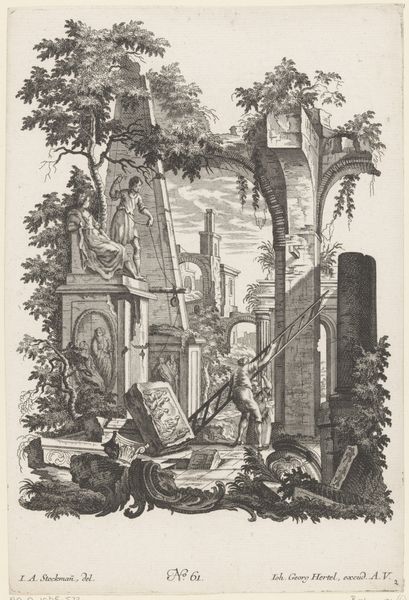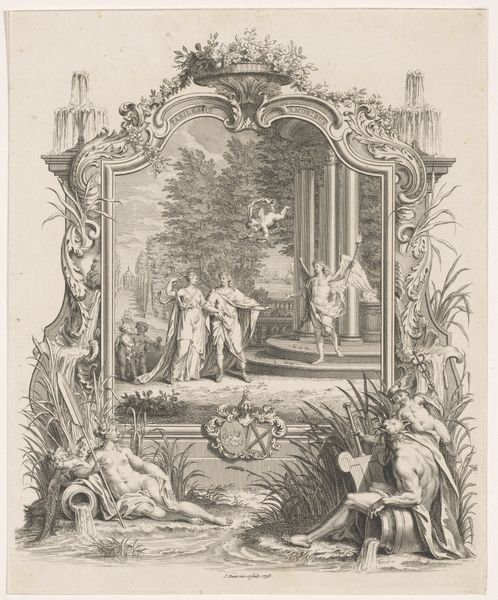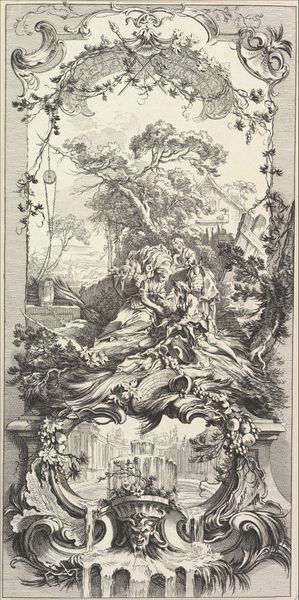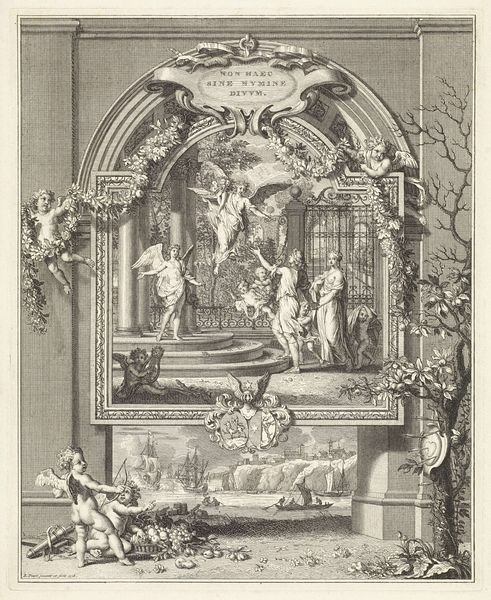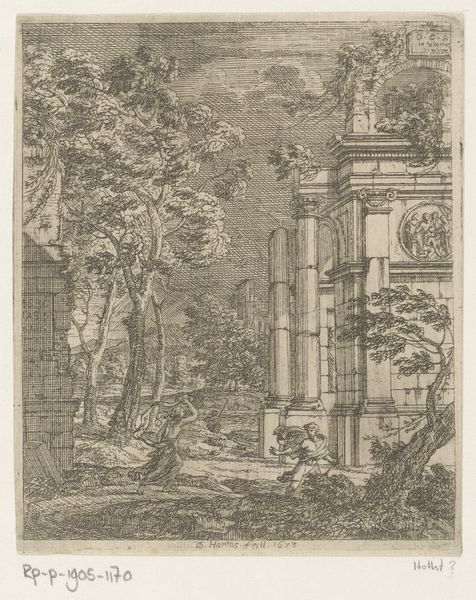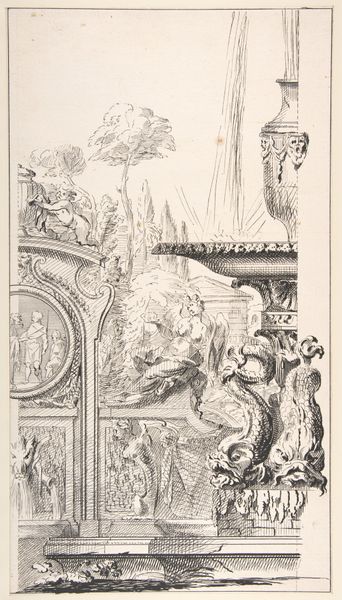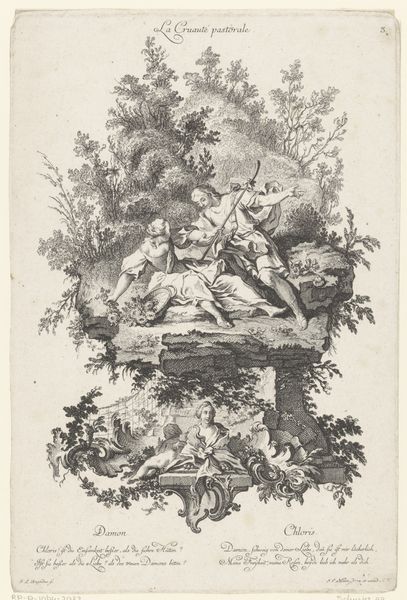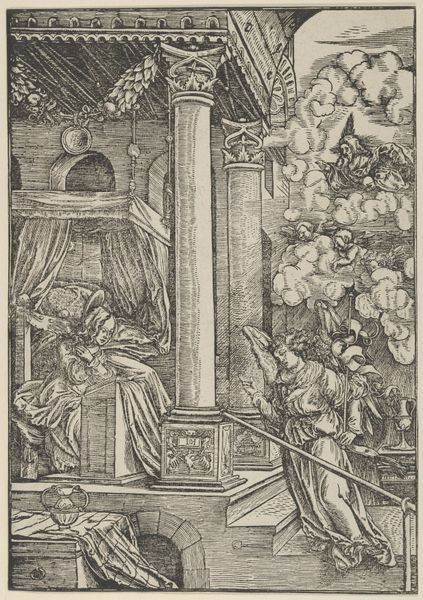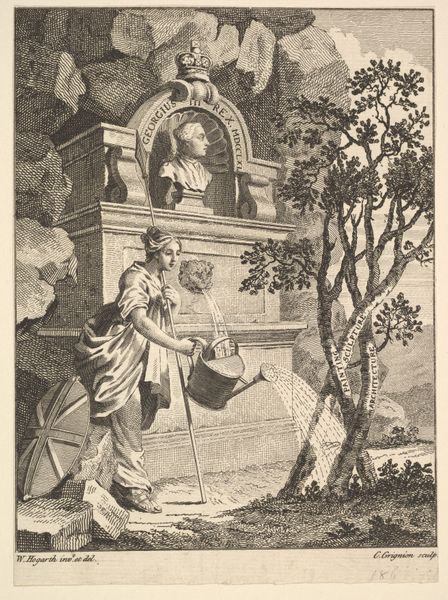
print, engraving
#
baroque
#
pen drawing
# print
#
landscape
#
figuration
#
history-painting
#
engraving
Dimensions: height 279 mm, width 190 mm
Copyright: Rijks Museum: Open Domain
Curator: The print, titled "Two Pilgrims in a Ruined Landscape" and created anonymously between 1720 and 1775, presents a rather intriguing composition, wouldn't you agree? It's a scene of decay and yet, there's an odd sense of constructed artifice. Editor: Yes, absolutely. The architecture is crumbling, but still… deliberate. There's a definite tension between the natural elements and the sculpted figures, with all this detail rendered as an engraving. What do you make of how the piece’s contrasting elements come together? Curator: Observe how the artist uses the framing device, the decaying architectural elements, to present the pilgrims. These fragments are not merely background; they are integral. The sharp contrasts in shading—note the meticulously rendered textures—create depth and simultaneously flatten the space, pushing the figures forward, almost staging them for us. The composition guides our eye relentlessly around this strange little world. Editor: So you're suggesting that the structure and arrangement of objects emphasize a commentary? Curator: Precisely. Consider the classical allusions juxtaposed against the religious figures. What is being communicated through their forced co-existence within this ruined architecture? And how does the monochrome engraving contribute to this disjunction? Editor: The monochrome enhances the feeling of something lost or incomplete... perhaps a meditation on time and faith? Thank you! Curator: A keen observation. By examining the intrinsic elements - the contrasts, juxtapositions, and composition – we can understand this engraving to be a commentary, whatever the original intention may have been.
Comments
No comments
Be the first to comment and join the conversation on the ultimate creative platform.
